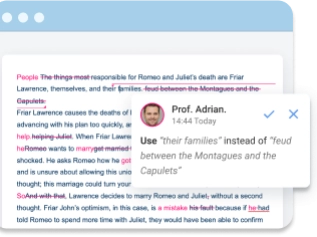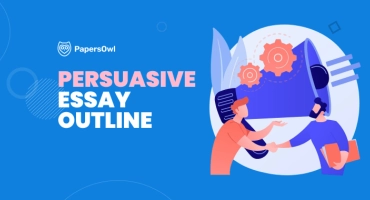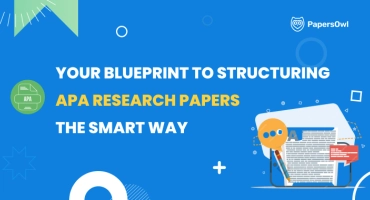Essay Planning: The Key Elements of Effective Essay Writing
Table of contents
Essay writing is more than just putting thoughts on paper. It starts with a plan — a quiet framework that holds ideas together. Before the first sentence, ask yourself, so what? Why does this point matter? What’s the reason behind writing at all?
Think of a student sorting through field data at midnight, coffee in hand, trying to connect strange patterns. Their essay structure mirrors how they make sense of their findings — step by step.
Planning makes university assignments feel less chaotic. It gives shape to scattered thoughts. A good plan knows where it’s going. Without it, even sharp ideas can fizzle before they hit the page. Getting help from an essay writer online might be the step that brings clarity!
Basic Parts of an Essay
Every essay has three moving parts. Without them, the text falls apart like a half-built windmill. You need a clear introduction, a strong main body, and a purposeful conclusion. These aren’t just sections — they’re the bones of understanding.
A good essay outline makes this structure obvious before you even begin. The introduction lays the groundwork. The standard body paragraph builds out the core. The conclusion brings it to a halt, often with a final pulse of clarity. Simple in shape, but tricky to balance. A good outline helps the reader follow your opinion, sentence by sentence. Knowing just what belongs in each section is half the battle.
Introduction
An introduction sets the focus. It gives background information without rambling. The reader should feel anchored — like they’ve been handed a map. Don’t circle around. Start writing when you know what you’re aiming at.
A good introduction paragraph shows direction without over-explanation. For example, when sketching a paper on seed data patterns, name the scope. Avoid long-winded setups. A clean paragraph opens the door, not a lecture.
Importance of Hook
Hooks don’t need to shout. They need to pull. Organized writing starts here — with the unexpected or oddly specific, like how a tree changes leaf chemistry before a frost. That detail grips.
You can get a great hook by tapping into something unfamiliar or odd. Even a strong essay can fall flat without one. It’s where curiosity meets intention. Use sub-questions, but not as trivia. Use them like a flint.
Thesis Statement
The thesis is your spine. Without it, the rest wobbles. A planning page for essay must draw one sentence that carries weight. That sentence holds an argument and offers an answer.
Write it out in full sentences, not fragments. Ask: What point do I support? Then stand by it. The thesis isn’t a guess. It’s a choice.
Body Paragraphs
Here’s where the real work happens. Each body paragraph tackles one idea. It begins with a topic sentence, moves through evidence, and ends cleanly. This order isn’t style — it’s logic.
That’s how to plan an essay that doesn’t ramble. Let’s say you’re writing about soil adaptation. The first of two paragraphs could outline mineral patterns. The next paragraph? Specific case data. Together, they form a persuasive argument.
Topic Sentence
A topic sentence is like a flag on a hill. It marks the main idea before the fog rolls in. Every paragraph needs one.
When building an essay, don’t hide the point. Open with it. Let the reader see the shape of your thought in one main point, then build from there.

Coherent Argument
A coherent argument doesn’t yell. It flows. The essay steps in order matter — each paragraph leans on the next.
Think of a discussion about moon dust chemistry. You start with a known fact, then layer a specific aspect — particle shape. Support it. Tie back. Paragraphs should pulse with ideas, not drift like static.
Concluding Sentence
This is where you land. Don’t fade out — finish. A concluding sentence should point back and also forward. It draws the curtain without slamming it shut.
Use a closed question if it suits, or reframe the essay’s endpoint gracefully. Wrap the paragraph, not just the sentence.
Conclusion
A good conclusion doesn’t repeat — it distills. Return to the point, offer an answer, then stop. This final sentence isn’t fluff. It’s the bolt that holds the frame.
If you’re working from a planning essay example, it’s clear: no rewinds, no padding. Just support, clarified. That’s the finish your essay deserves.
Essay Organization and Planning Techniques
Good planning gives an essay its spine. Without it, your thoughts drift. Use a clear organization to place each thought in its proper spot. A tight outline helps more than guessing what comes next.
Planning sharpens the sentence. It also stops repetition before it begins. Think in lines, not clouds. Lay out ideas so they follow a logical order. One builds on the last. No wobble, no filler.
Three Essential Blocks: Intro, Body, Conclusion
Start with three blocks. The introduction sets up the direction. The body develops the point. The conclusion ties the thread.
Even odd topics — say, how moss absorbs light differently in overcast regions — can follow this format. The outline highlights the overarching argument and lets each paragraph do its job. This is what gives the essay its pace.
Five-Paragraph Essay Template
Use a five-paragraph essay template when stuck. One intro, three body paragraphs, and a closing note. That’s enough to hold a steady line.
Each part needs a clear sentence. Add topic sentences to anchor your points. Support them. Let one example bring it to life — maybe the way ice crystals shift under changing gravity. It’s not about sounding clever. It’s about staying interesting without straying.
Body Paragraph Structure
Topic → Evidence → Wrap-up
The core of a paragraph is a pattern. You start with a topic sentence, then bring support. Round it off with a line that grounds the thought.
If your argument is dense, trim. Imagine explaining the lifespan of a coded protein chain. Break it down, but don’t dilute it. This shape helps the reader stay with you, sentence by sentence.
Example Body Paragraph with Transitions
Transitions carry the weight between ideas. Don’t let the text snap apart. A good body paragraph leans into the next.
Let’s say one paragraph explains heat data. The next paragraph shifts to seasonal extremes. Use transition words that signal change, not noise. These seams make the argument hold.
Graphic Organizer / Essay Mapping
A detailed plan clears confusion before writing begins. Mind maps place the main topic in the center, with branches for key points and subpoints, forming a clear outline.
Example ASCII mind map:
[Main Topic]
/ | \
[Point1] [Point2] [Point3]
/ \ | |
[Sub1] [Sub2] [Sub3] [Sub4]
This layout shows how ideas connect. It helps you argue key points with clarity and keeps paragraphs targeted.
Visual mapping stops unrelated ideas from mixing. For instance, planning soil nutrients separately from farming methods ensures a sharp, organized working process.
Graphic organizers build understanding and guide your essay’s flow. This simple tool boosts both clarity and depth.
Types of Essay Structure
Choosing the right structure shapes your message. Each essay type asks for a different approach to keep different ideas clear and flowing. A solid chronological format is a classic example. It maps events or steps in order, making it easy for readers to follow specific dates or stages.
| Type | Description |
| Compare and Contrast Essay | This structure puts two or more thoughts side by side. A good compare and contrast essay weighs the differences and similarities. It builds an argument by showing how one idea stands against another. This format helps sharpen the attention and push your point clearly. |
| Chronological | Following the time arrow, this method orders paragraphs by when things happened. It’s a neat way to tell stories or explain processes, step by step. Each sentence and paragraph fit into a timeline. The outline naturally guides the reader through changes or developments. |
| Problems-Methods-Solutions | This flow analyzes an issue, explores possible answers, and offers solutions. It’s logical and persuasive. Start by defining the problem clearly. Then, support your claims with evidence. End with a paragraph presenting how the solution fits and its importance. |
Stages of Good Essay Organization
How to write essay plan? Good organization starts with clear steps. If you are struggling with the workload, you might even consider paying someone to write my assignment for me to ensure a high-quality submission, but students must still know how to write an essay plan to stay focused.
- Understand Your Topic: Grasp the essay question fully. Clarify keywords and ideas before diving in.
- Define Key Points: Pick the main points that support your argument. Each should lead a paragraph.
- Group Similar Ideas: Arrange ideas in logical order. This keeps paragraphs clear and connected.
- Note Down Sources of Further Information: Track sources for evidence. Link them to specific points in your outline.
- Decide What You Will Include in Each Section: Choose what belongs where. Each section must have a clear purpose and point.
- Write a Draft: Turn your outline into the first draft. Decide concerning structure and flow at this stage.
- Figure Out a Word Count: Set limits to fit requirements. Good planning controls sentence length and essay size. For tricky cases, check guides on paying for papers.
How to Plan an Essay?
Planning guides students through each stage of their work. Start by researching the topic. Then, create a mind map to capture ideas and their links. Next, build an outline to organize your thoughts. Write a draft based on this plan. Finally, check for logical order and focus on answering the question clearly.
Step-by-Step Planning Algorithm
- Research main points and sources.
- Map ideas visually to see connections.
- Draft a clear outline with main sections.
- Write your first draft, following the outline.
- Review organization and coherence to refine focus.
Planning Checklist
- Define your thesis clearly.
- Gather credible sources.
- Break content into paragraphs.
- Use bullet points for clarity.
- Ensure smooth flow between ideas.
- Stay focused on the question.
- Keep paragraphs balanced in length.
- Check transitions between sections.
- Revise for clarity and grammar.
- Confirm all points support your argument.
Essay Planning Example
Topic: Benefits of Distance Learning
- Mind map shows advantages, challenges, and solutions.
- Outline previews intro, body (with evidence), conclusion.
- Sample paragraph supports benefits with unique insights and examples.
This method helps students plan, outline, and write concentrated essays confidently.
Writing Strategies for Strong Structure
Revising your paper means checking the structure with a reverse outline. This helps students write clear arguments and maintain a target on the open-ended question. Decide what to keep or cut for a sharper discussion and a balanced paper. If the demands of research and revision become overwhelming, many students choose to pay to write research paper professionally to ensure structural perfection and academic compliance.
- How to Write an Engaging Hook? Start with a sentence that grabs attention and hints at your answer. A strong hook guides the audience into your introduction and sets the tone for the essay.
- Crafting a Clear Thesis Statement: Your thesis statement is one sentence that states your argument. It connects evidence to the original question and guides the essay’s structure.
- Useful Transitions Between Sentences: Use transition words to link paragraphs smoothly. They keep the logical order and help support the main points. Clear transitions improve understanding and flow.
- Editing and Reviewing Your Structure: At the writing stage, review paragraphs to ensure each supports your thesis. Check that your argument is coherent and that the evidence fits the logical structure. This refines your English essays and strengthens your paper.
- Free unlimited checks
- All common file formats
- Accurate results
- Intuitive interface







